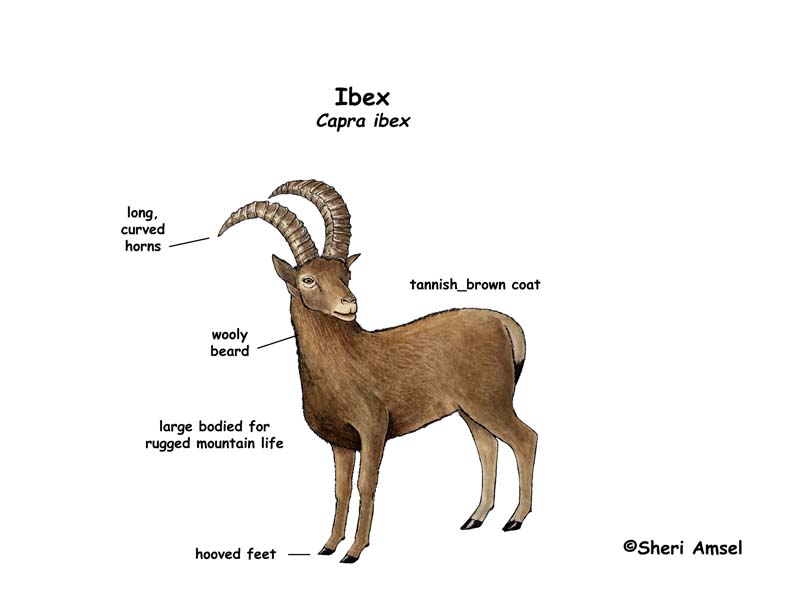

Ibex are found in central Europe, southwestern Asia, northeastern Sudan and northern Ethiopia.
They live in high altitude meadows and on dry rocky cliffs, sometimes found at over 20,000 feet.
Their coat is tan to brown. They have long, curved horns and a wooly beard. The can grow to more than 5 feet long and weigh as much as 300 pounds.
They are active during the day (diurnal).
They eat grass, leaves and plants.
Predators are leopards, bears, and wolves.
Males and females live in separate herds except during mating season, when males battle for the right to mate with females. Females are pregnant for about 6 months (gestation) and have 1 – 3 young in June.
Ibex can live more than 15 years in the wild. They are listed as Lower Risk - least concern.
Kingdom: Animalia
Phylum: Chordata
Subphylum: Vertebrata
Class: Mammalia
Order: Artiodactyla
Family: Bovidae
Subfamily: Caprinae
Genus: Capra
Species: Capra ibex
When you research information you must cite the reference. Citing for websites is different from citing from books, magazines and periodicals. The style of citing shown here is from the MLA Style Citations (Modern Language Association).
When citing a WEBSITE the general format is as follows.
Author Last Name, First Name(s). "Title: Subtitle of Part of Web Page, if appropriate." Title: Subtitle: Section of Page if appropriate. Sponsoring/Publishing Agency, If Given. Additional significant descriptive information. Date of Electronic Publication or other Date, such as Last Updated. Day Month Year of access < URL >.
Amsel, Sheri. "Ibex" Exploring Nature Educational Resource ©2005-2024. December 13, 2024
< http://www.exploringnature.org/db/view/Ibex >

